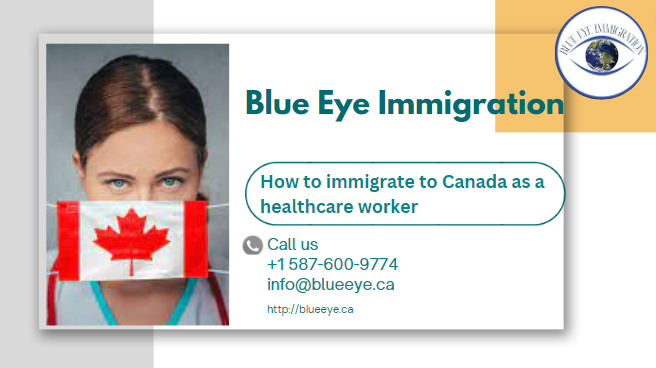This article will give an outline of how to come to Canada as a healthcare professional and obtain certification in order to find job, given the dire lack of healthcare workers in Canada.
Three teenagers were unable to receive care at their local hospital in Clinton, Ontario, in September of this year because the emergency department was closed early. This information was reported by CTV News. The narrative specifically mentions that they had to go to a different hospital located 20 kilometers away for medical attention because their local emergency room closed at 6 p.m. that evening.
The narrative goes on to say that emergency department closures are anticipated to persist throughout Canada “because finding people to work there is a key problem.”
Coming to Canada to work in healthcare
Even though the narrative above is only one instance, it effectively highlights a developing problem in this nation: Canada needs more healthcare professionals. The following will suitably give a summary of some of the immigration routes open to foreign people wishing to work in Canada’s healthcare sector.
Express Entry — Category-Based Draws: Introduced in June 2023, the Express Entry category-based draws allow the federal government to choose immigration candidates for permanent residence in Canada based on certain skill proficiencies and recent job experience. The healthcare industry is one of the five occupational focus groups for this year.
“Standard” is the Express Entry standard. Candidates eligible for immigration to Canada through the Federal Skilled Worker Program (FSWP), the Federal Skilled Trades Program (FSTP), or the Canadian Experience Class (CEC) are the focus of Express Entry, which ranks candidates according to their Comprehensive Ranking System (CRS) score.
Note: Not only are healthcare professionals eligible to enter the Standard Express Entry drawings, but all candidates for immigration are as well.
Particularly pertaining to medical professions, foreign citizens with nursing training may qualify for the CEC and the FSWP.
Provincial Nominee Programs (PNPs): Local governments across Canada use PNPs, which are available in all but two of the country’s provinces and territories (Quebec and Nunavut excluded), to choose immigration candidates they feel have the greatest potential to address labor market issues in their communities.
Here are five PNP streams that are accessible to medical professionals:
- The Human Capital Priorities Stream in Ontario
- The Healthcare Professional category for British Columbia is available. through its Express Entry and Skills Immigration immigration routes
- The International Health Worker EOI pool in Saskatchewan (nurses)
- The Labour Market Priorities Stream in Nova Scotia
- The Internationally Educated Nurses (IEN) program in New Brunswick
Obtaining certification in Canada as a foreign healthcare practitioner
Entering Canada as a foreign national is only the first step towards a career in healthcare. For the purpose of working in their preferred Canadian province or territory, international healthcare professionals—including nurses—must now seek accreditation or licensure.
Because each province has its own institution that licenses internationally educated nurses (IENs), the licensing and accreditation process for healthcare professionals varies by region. It is important to keep in mind that an IEN who receives accreditation in one province may need to undergo another licensing process if they relocate to another Canadian province or territory.
What general procedures are followed throughout the accreditation process?
Once more, each province has a different accreditation procedure for healthcare professionals. Nonetheless, the fundamental procedures an IEN has to follow in order to obtain accreditation in order to function in Canada are listed below.
1. Contact the relevant provincial regulatory organization as soon as you arrive in Canada. The exact kind of nursing license needed will determine which organization is the best place to contact. Here is a list of Canadian regulatory agencies that oversee IENs.
2. Completing an assessment via the National Nursing Assessment Service (NNAS), which compares a person’s credentials to Canadian standards, is often the next step. Successful candidates will also get an Advisory Form from this evaluation, which they must submit with their next application to the relevant provincial regulatory agency.
Notably, NNAS is not used in Quebec or the three territories of Canada. Rather, each of these four zones uses a different evaluation technique.
3. Apply to the provincial regulatory agency for the province in which you intend to practice when the assessment is over and the necessary fees have been paid. This might need finishing additional educational programs mandated by the province in order for an IEN to fulfill license criteria in a particular area.
To learn more about the actions that several Canadian provinces are doing to expedite the healthcare accreditation process and facilitate the employment of globally trained healthcare workers, continue reading this article.
